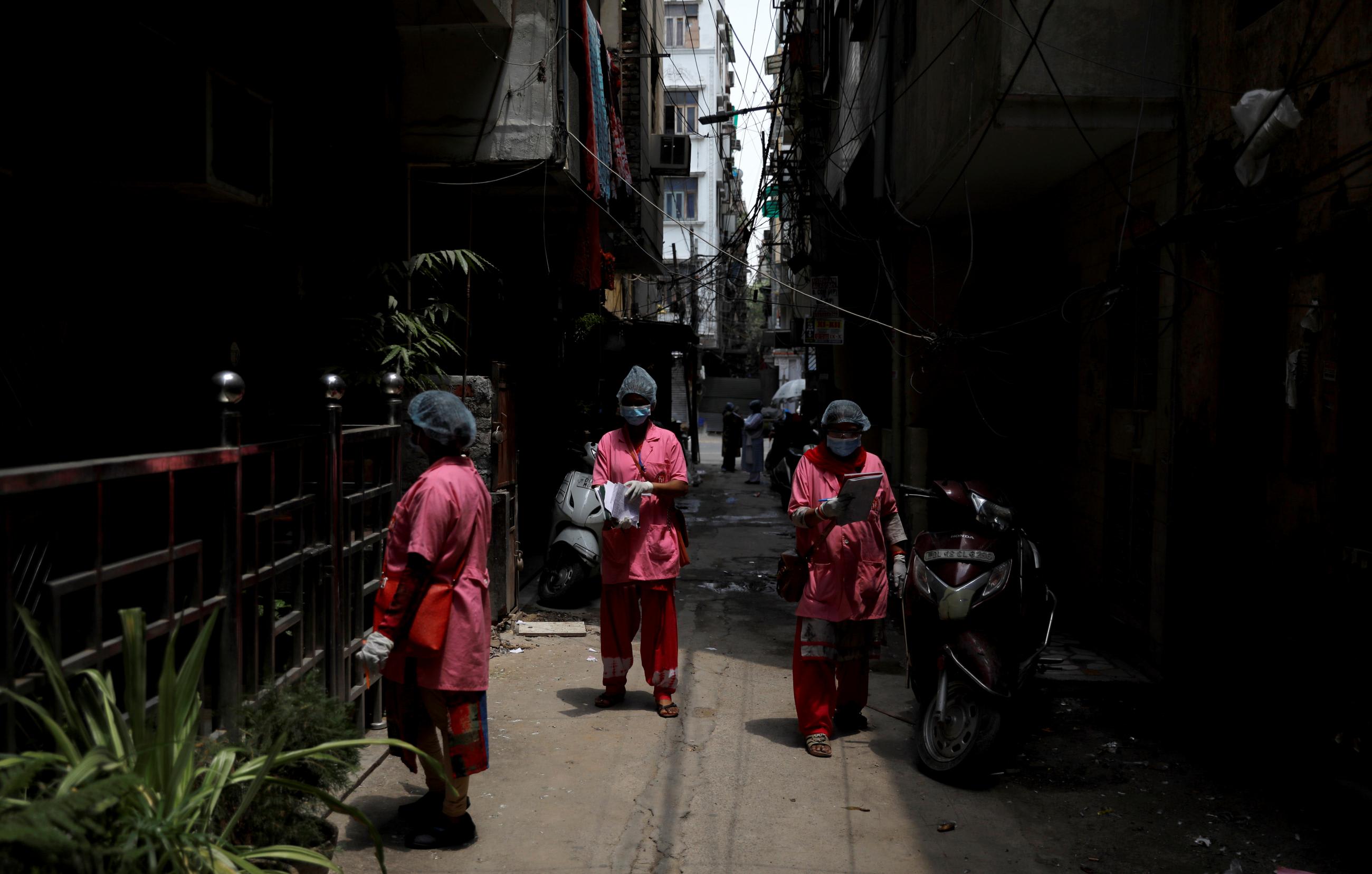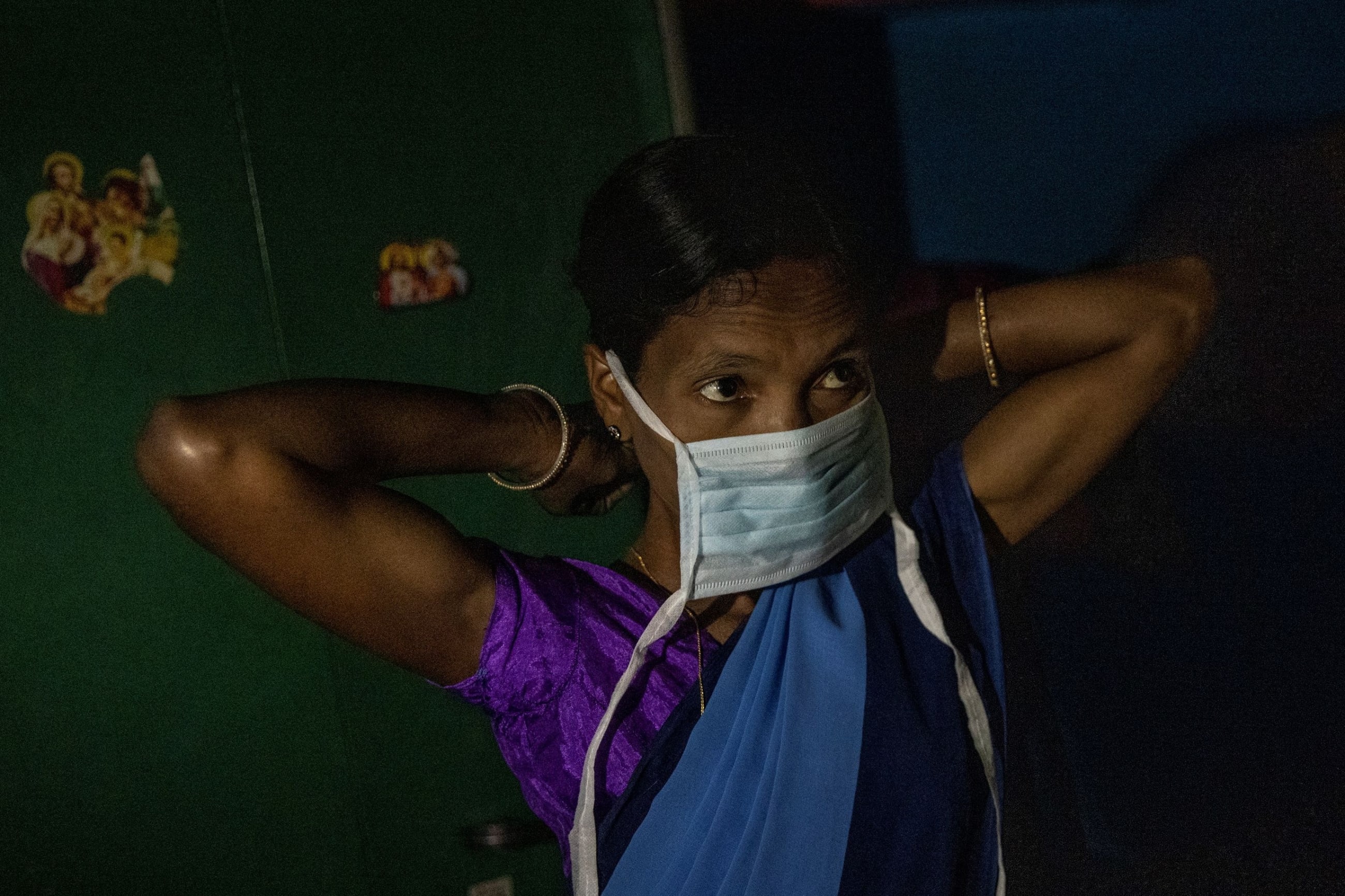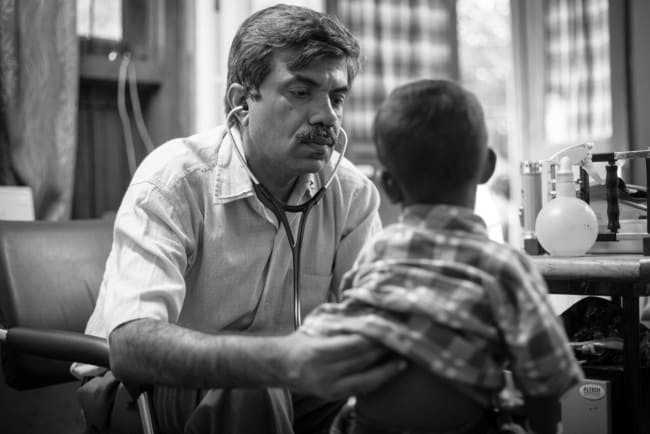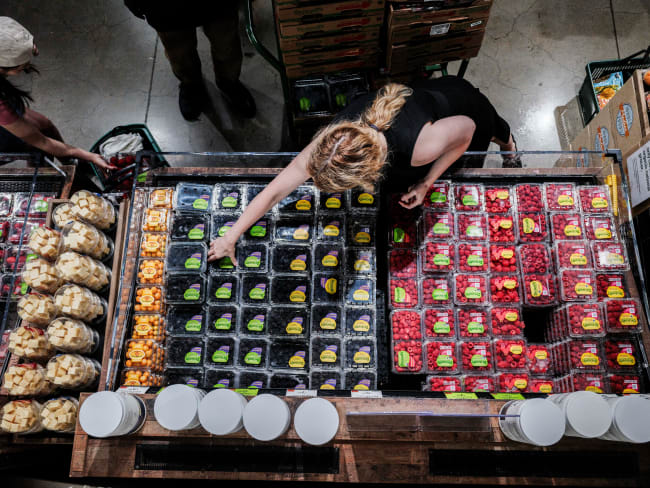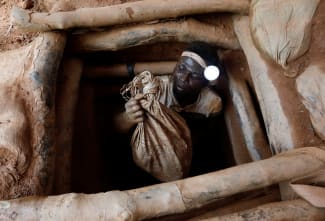Tap, tap. The front door is ajar, but the woman in the crisply draped pink sari and matching rose-colored mask still knocks earnestly. She wants to speak to the mother-to-be in the household and assess her wellbeing; time is short, and she needs to knock on many more doors.
Sometimes she is welcomed into homes and sometimes the door is abruptly shut in her face, but Swarna-di labors on cheerfully. She is a foot soldier in India's "pink army" of trained female community health activists, officially called Accredited Social Health Activists (ASHA) workers. These ASHA community health workers, who have traditionally led maternal and child health efforts, are now the first line of defense against COVID-19 in rural communities across India.
At each point of the pandemic, they were asked to go above their traditional duties. During the first wave, the workers were critical to testing and tracing efforts, and to arranging treatment for community members diagnosed with COVID-19. During India's first wave of the pandemic in 2020, and again during the second wave from March to June 2021, they went door-to-door through India's remote corners, risking their own health, encouraging their community to accept lifesaving COVID-19 vaccines. Their workload and stress skyrocketed during India's devastating delta wave with increased COVID-related tasks associated with case spikes, increased responsibilities to promote COVID-19 vaccines, and their traditional health promotion activities.
India's ASHA community health workers have traditionally led maternal and child health efforts, but are now the first line of defense against COVID
ASHA workers earn a meager base pay, with the expectation of increasing their salary through incentive-based tasks, such as helping a woman to give birth in a hospital or signing a child up to receive a polio vaccine. As the pandemic changed their workload, and fewer people were willing to seek out routine care and hospital visits for fear of contracting COVID-19, they earned fewer incentives and now report a significant drop in monthly wages. Even though they have been on the frontlines of India's efforts to quell COVID, many have needed to take on side work, such as sewing or food catering, to provide for their families.
Community health workers are indispensable to solving current and future health crises, but it is essential they receive support. Having their needs be at the center of state and federal government decision making, and having policymakers incorporate their mental health and economic needs into program design can immensely empower them to the benefit of the entire health system. ASHA workers are critical to fighting the pandemic, but they cannot do their jobs optimally if they are not supported financially and their mental health is not prioritized.
As COVID-19 continues to tear through the world in waves, state governments in India are increasingly facing protests and work stoppages as ASHA workers demand better wages. One assumes that protecting these workers would be foremost on the government's agenda, particularly with a reeling public health system that just made it through a third wave of COVID-19. Omicron generated astonishing numbers of new infections, and it has been especially harmful to those who are unvaccinated. The Indian government has provided advice regarding sufficient oxygen supplies and beds to manage worst-case scenarios, but additional guidance and funding for community health workers would advance their empowerment and augment the foundational bedrock of public health in a substantial way.
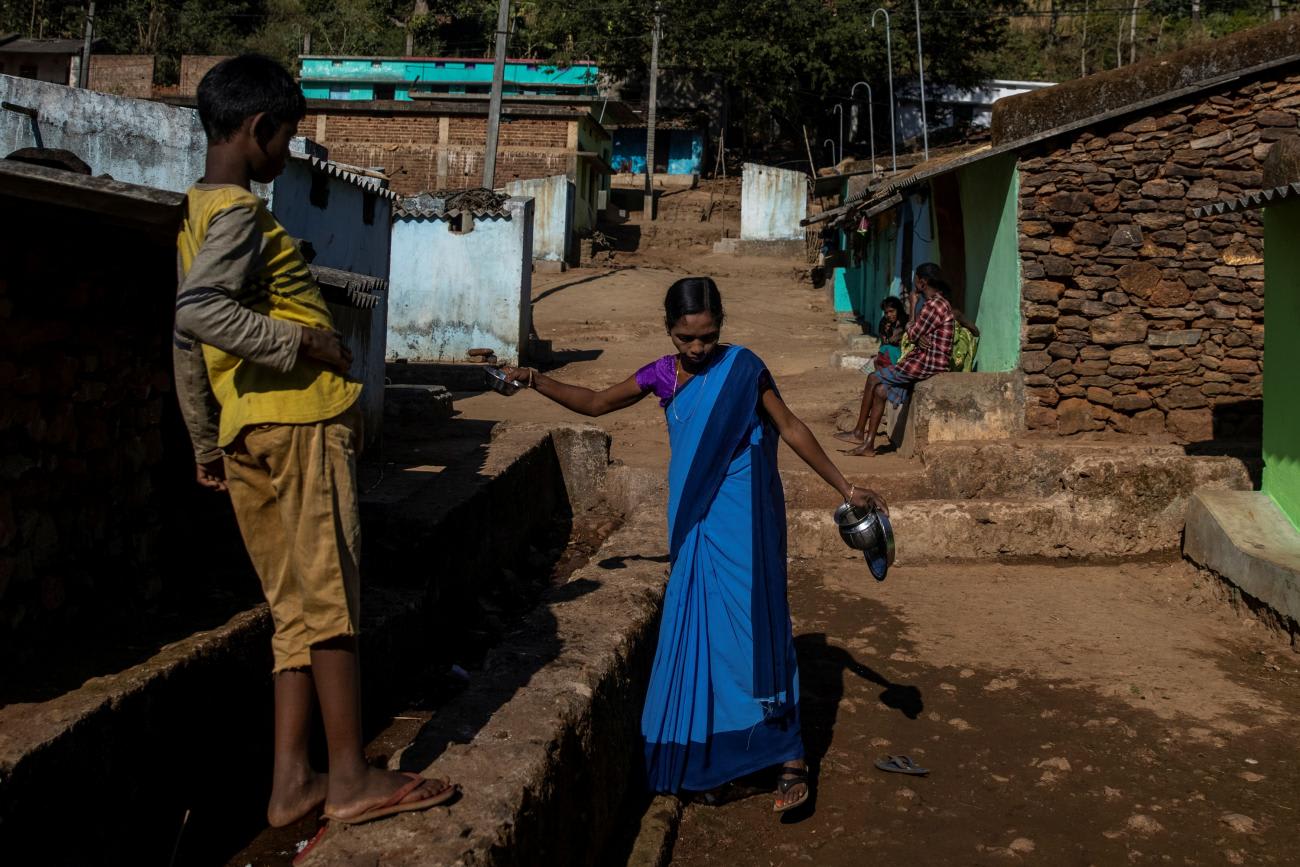
India's COVID-19 vaccination record is impressive with 1.8 billion doses given, and more than 60 percent of the population fully vaccinated; these proportions are only set to increase with the recent rollout of the vaccine to 12- to 15-year-old children. A large proportion of this progress is due largely to ASHA workers on the frontlines of the vaccination effort. In knocking door to door, their endeavors have led to vaccination of India's most rural and remote populations—a possible reason why the latest omicron wave passed without the same enormous loss of life experienced during the delta wave.
Recently, community health workers' voices are beginning to be heard. In Haryana, the government is adding them to the Ayushman Bharat scheme, which provides basic health-care services to impoverished parts of society. In Punjab and Uttar Pradesh, ASHA workers are getting an increase in wages and commissions. As ASHA workers have become more crucial to rural health-care delivery in these states, they have been able to join workers' unions, make their voices heard for better work conditions and pay, and leverage local elections to urge officials to prioritize their voices.
However, all levels of government could go further, by providing a guaranteed livable wage and access to quality health care and mental health services. By protecting and caring for community health workers, these "corona warriors" will in turn will be able to better serve their communities and help India ride out the next wave, and any yet to come.
After the home visit, Swarna-di triumphantly makes her notes. Not only was the pregnancy going well now, but the young mother-to-be had also happily received her COVID-19 vaccine. One more masterstroke in the nation's canvas of health; and with the determined woman in pink and a million others like her, the color of hope infuses the pandemic landscape.
